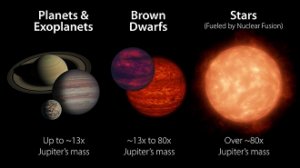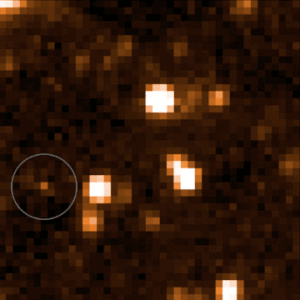
Planets, ExoPlanets, Brown Dwarfs and stars
Planets as we know them are celestial bodies that revolve around a gravitational field composed of at least one sun (there may be more than one), while the exoplanet orbits a star that is not a sun, until September 21, 2021, 4841 exoplanets were known in 3578 systems, with 796 systems having more than one planet.
around a gravitational field composed of at least one sun (there may be more than one), while the exoplanet orbits a star that is not a sun, until September 21, 2021, 4841 exoplanets were known in 3578 systems, with 796 systems having more than one planet.
A star is generally more than 80x the mass of Jupiter, however there are smaller and less bright stars as they get older, they have a mass 13 to 80 times that of Jupiter, and astronomers have already found about 2,000 in our galaxy, the Milky Way.
In general brown dwarfs are new, however it was recently discovered, by chance like most astronomical discoveries, a body called WISEA J153429.75-104303.3, with more than 13 million years, as it was fortuitous its discovery was nicknamed “The accident”.
Age is interesting because it can tell us something about the origin of the universe, or the origin of this universe in case there is a multiverse, but due to its age it will give many clues.
A brown dwarf is a body larger than any planet, but too small and too cold to be a star, this is because the dwarf does not have enough mass to fuse hydrogen in its core, and thus release stellar energy, with age it gets colder.
The brown dwarf has different characteristics than the others, it doesn’t even have the faintest glow (see below for a detection image), and this intrigued scientists, said Davy Kirkpatrick: “This object defied all our expectations”, one of the co-authors of the discovery Published in the Astrophysical Journal Letters.
Two other surprising facts about the “Accident” is that it is about 53 light years away from the Sun, almost neighbor to the Solar System, and it travels through the galaxy very fast, at about 207.4 k/s, or , 25% faster than any other brown dwarf.
The mysterious universe makes us not only think about the origin and destiny of everything that exists, but also its originality and beauty that emanates from something superior to us.










